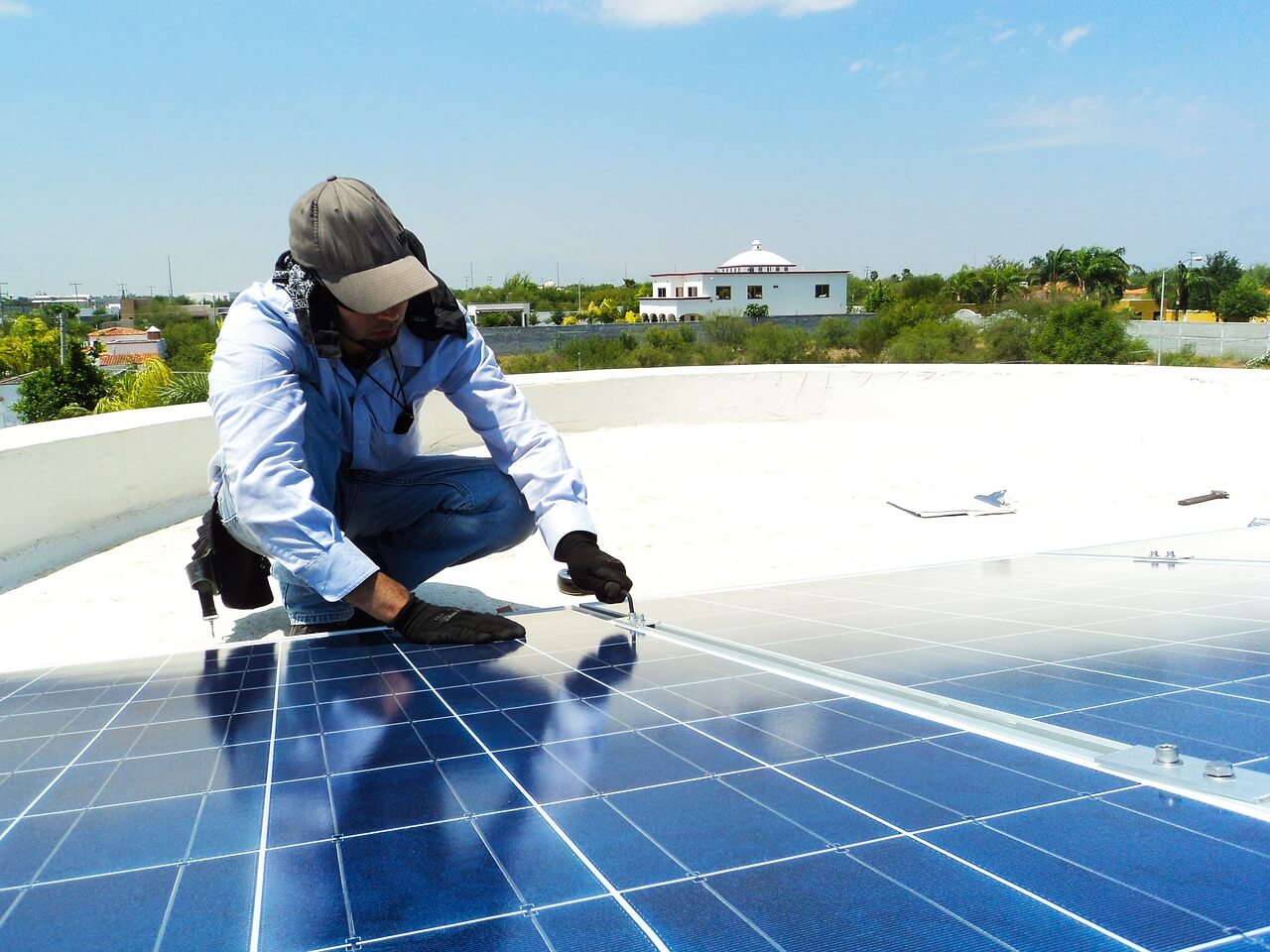Although in the collective mind the first thing that comes to mind are the solar panels, a photovoltaic installation includes more components, such as the solar inverters, the batteries or the monitoring system; and many others that could be defined as the supports, optimisers, the bidirectional meter and other small components including the wiring, the protection and fixing systems, etc.
That is why it is important to make a good choice of all the elements in terms of their quality, performance, guarantee or price; and in this article we are going to tell you what each of these parts of the photovoltaic system consists of and what their functions are.
Solar panels
They are also called photovoltaic modules and they are the essential components responsible for generating electrical energy from the sunlight, thanks to the so-called photovoltaic effect.
The power of a solar panel is not the only factor to take into account when installing it, it is also important to consider its efficiency and long-term performance guarantee. Sometimes a lower power module offers better performance than a larger one if these two parameters are higher, as it manages to generate more energy covering less surface area and the electricity production will be less affected by time.
Other external factors that can affect the photovoltaic module and its energy generation are solar radiation, which depends on geographical location, the orientation and inclination of the roof as well as possible shadowing by elements of the roof or other buildings.
We can currently distinguish three main types of solar panels, which are defined by the manufacture of the cells of which they are composed: crystalline silicon (monocrystalline and polycrystalline) and amorphous.
LRP Energy always takes care to offer the customers the best quality and efficiency, that is why we only work with the best monocrystalline panels.
Inverter
Known as the heart of the photovoltaic installation, it is responsible for adapting the direct current generated by the solar panels or stored in the battery, depending on the configuration of the system, to alternating current, which is used by the electrical equipment in our home or business.
The inverters are also in charge to store information about the PV production, grid consumption and the general status of the installation, being responsible for the fact that we can monitor all this information.
It is therefore a highly efficient and safe element, a key element in grid-connected photovoltaic installations and in off-grid installations whose mission is to supply electricity to a home.
There are two types of solar inverters on the market and various ways of installing them, from microinverters to string inverters or smart modules that combine both the inverters and the optimisers. The choice of one or the other may depend on the characteristics of the roof or the type of estimated electricity consumption, so it is important to find qualified and trustworthy professionals who can advise you.
LRP Energy’s Energy Advisors carry out a free on-site study so that each project is customized to fit each customer’s needs..
Optimisers
Components located between the set of photovoltaic modules and the inverter. Their main function is to improve the performance of the installation by making each module operate at its maximum power point.
When a panel of a branch or string of modules, i.e. the set of panels connected, has a lower performance than the others, either due to factory defects, shadows or other reasons, the rest of the modules will operate at the same power as that panel, significantly reducing the overall performance of the installation.
One of the easiest ways to avoid this problem is to install optimisers connected to each panel, so that each one operates independently of the others.
Another way to overcome this drawback is using microinverters, generating a more expensive initial investment but at the same time being more flexible, allowing the number of panels in the installation to be expanded without limitations.
Supporting structure
The one in charge of fixing the panels to the ground or roof, there are two types:
- Coplanar structure: used when the panel is to be attached to the roof, this is the most attractive solution from an aesthetic point of view, it also allows better utilization of the available roof space.
- Triangular structure: enabling to correct the inclination and orientation of the panel, optimizing electricity production. Their use is essential on flat roofs, they can be fixed by means of screws or ballasts. Their price is higher than that of coplanar structures and they require space between rows of panels to prevent them from shading each other.
Batteries and storage systems
They allow us to store photovoltaic production for later use, although the cost of such a system is quite high and delays the payback period of the investment. However, it provides us with great advantages, such as allowing the continuity of the electricity supply at all times and energy independence, as we are not constantly dependent on the electricity grid and we can make the most of the photovoltaic production of our installation.
The batteries improve the efficiency of the installation when the energy consumption is mainly nocturnal; in addition, if we are users of electric vehicles, there are even more advantages at the time of charging them.
Secondary components
- Bidirectional counter
A device that measures the energy flowing from the electricity grid to the consumer (like any other counter). It also measures the energy that the consumer injects into the electricity grid. It is an essential element in any self-consumption installation with surpluses, as the supplier will compensate us for the energy surpluses, i.e. for the energy produced and not consumed that we export to the grid.
- Charge controller
This is an extremely important element as it makes us sure that the battery system works correctly. This component is also responsible for preventing overcharging and over-discharging of the batteries, extending their useful life.
There are two types of regulators: MPPT and PWM. The choice of one or the other depends on the type of photovoltaic installation as well as the use we make of it.
- Monitoring systems
Applications that allow us to verify the proper functioning of the solar system in real time remotely and to optimize our self-consumption installation. Their main objective is enabling the user to act quickly if faults and/or breakdowns are detected in the system and when it is necessary to carry out a repair.
In LRP Energy we make sure that your installation has components of the best quality that fit to each specific situation.
Request your free study now so that you can check the viability of the project in your own home or business, and start producing photovoltaic energy from one of the leading companies in the solar energy sector.

